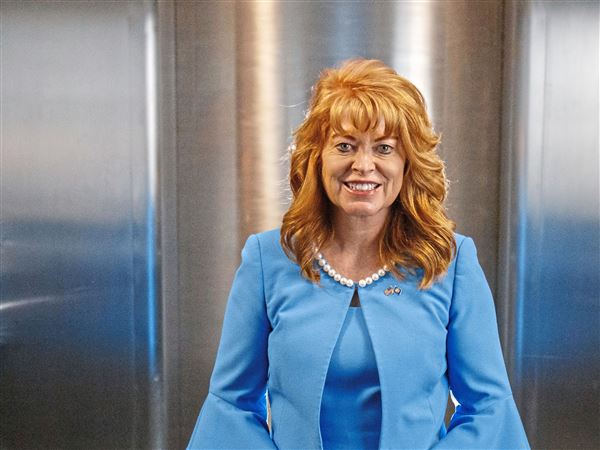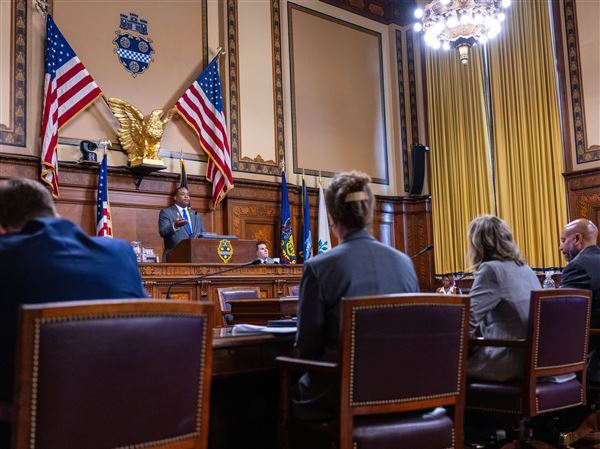In September 2001, researchers with Consol Energy Inc. and the U.S. Department of Energy began work on the virtually unknown practice of storing carbon dioxide underground.
Over the course of the next 12 years, researchers spent at least $13 million and injected about 4,500 metric tons of carbon dioxide into an unmineable layer of coal in Marshall County, W.Va. — one of the first times that CO2 had ever been successfully placed in a coal seam in such a way.
And they found that the presence of CO2 increased the amount of coalbed methane, a form of natural gas trapped in coal seams, that could be extracted from the ground.
The landmark discoveries came from one of the dozens of public-private partnerships that over the past two decades have explored ways to operate coal-burning power plants cleanly.
Researchers, in test studies funded jointly by government and industry, developed the process of carbon capture and storage (CCS), which traps carbon dioxide prior to release into the air, compresses it to a liquid state and stores it in underground geologic formations.
The clean coal research program at the National Energy Technology Laboratory, the DOE’s research wing which has offices in South Park and in Morgantown, W.Va., focuses on “retaining the benefits of continuing to use coal to produce electric power,” according to a mission statement.
But carbon capture and storage efforts — which researchers describe as promising but nowhere near the scale needed to offset global climate change — face complicated hurdles amid government policies that are not creating incentives for investment.
Looming coal-fired power plant closures due to new environmental regulations, coupled with competition from natural gas and renewables, have clean coal advocates concerned the focus on their technology is lessening.
“I think the fact that ... coal’s importance is diminishing in the U.S. doesn’t help the research,” said Howard Herzog, a senior research engineer in the Massachusetts Institute of Technology’s energy initiative.
Losing interest
Mr. Herzog presents carbon capture and storage technology as a medium between two unrealistic extremes: ignoring the effects of catastrophic climate change and banning the use of fossil fuels altogether.
By the time President Barack Obama swept into office in 2009 with an environmental agenda to boot, carbon capture and storage had advanced dramatically for 20 years. Research had produced better solvents to capture carbon dioxide from exhaust gases and regional groups had formed to search for places that could contain it underground.
The international vision was to complete 20 large-scale carbon capture and storage demonstration projects by 2020, when proponents expected the technology to be commercially viable.
“All that fell apart, slowly, over the last five to six years,” Mr. Herzog said. “Companies have lost interest. They haven’t abandoned CCS, but they've put it down on their priorities.”
Mr. Herzog and other clean coal supporters contend the Obama administration’s climate policy failed to meet expectations after hitting a partisan snag. Carbon capture and storage is a regulation-driven market: Without definitive rules capping carbon emissions, demand for technologies that would trap carbon waned.
“Generally speaking, utilities like regulatory certainty,” said Lynn Brickett, acting director of the NETL’s carbon capture division. Ms. Brickett described the agency’s research agenda as closely following federal rules since the 1972 Clean Air Act spelled out governmental authority to regulate pollutants such as sulfur dioxide, nitrogen oxide, mercury and, now, carbon dioxide.
“When regulations occur, that’s when you typically see things moving,” she said. “Several years ago, it appeared regulations (on carbon emissions) were going to be forthcoming, then there was a bit of delay.”
In 2009, the Ohio-based electric utility American Electric Power joined NETL and others in embarking on a project that aimed to be the first integrated carbon capture and storage system in the world.
At its Mountaineer coal plant in New Haven, W.Va., AEP poured $114 million into the initial development of a system that, over an 18-month pilot phase, captured more than 50,000 metric tons of carbon dioxide and successfully stored more than 37,000 metric tons underground.
But it stalled when the company asked state utility regulators to approve a rate plan that would recoup project costs from customers. Without a federal requirement on carbon emissions to show, AEP could not justify the need, company officials said.
“We are clearly in a classic ‘which comes first?’ situation,” wrote Michael Morris, AEP chairman and chief executive officer, in a statement announcing the project cancellation in 2011.
While carbon capture and storage technology is undoubtedly vital to keep coal plants in compliance with expected regulations on carbon emissions, Mr. Morris said, “It is impossible to gain regulatory approval to recover our share of the costs for validating and deploying the technology without federal requirements to reduce greenhouse gas emissions already in place.”
AEP is not alone in questioning the risks with the most expensive demonstrations, said Michael Knaggs, director of the NETL coal program’s Office of Major Demonstrations, which oversees projects typically defined as capturing and storing at least 1 million tons of CO2 at one site.
“We’ve seen some reconsiderations,” Mr. Knaggs said. “The call for carbon regulations was diminished. Companies had to rethink their assumptions on their endeavors they had begun.”
Too little, too late, too complex
The seemingly sought-after carbon limits could be forthcoming this summer, as the EPA hopes to finalize rules that require U.S. power plants to collectively reduce their emissions 30 percent below 2005 levels by 2030. Power plants in 2013 were the largest source of U.S. carbon dioxide emissions of any sector at about 37 percent. Emissions from the transportation sector accounted for about 31 percent.
Known as the Clean Power Plan, the EPA rules would give each state a target reduction goal and the option to form a plan to reach it.
But clean coal advocates said the EPA’s cuts are still not large enough to support carbon capture and storage markets, yet they could be too large for coal plants to economically operate. In its analysis of the Clean Power Plan, the DOE estimated about 30 percent of all installed coal-fired power capacity would be shuttered by 2040, more than twice the capacity expected without the new regulations.
If anything, the rules create more regulatory uncertainty as electric utilities and coal mining companies have lined up to oppose them and encouraged states to refuse to submit plans.
“We believe that the assumptions on which these state targets are based on are all wrong,” said Luke Popovich, vice president of external communications at the National Mining Association. “They have exaggerated the ability of states to achieve these goals.”
A promising technology
Research will continue to progress in the face of policy changes, researchers said. Technological advancements have lowered the cost of capturing and storing one metric ton of carbon dioxide from $150 in 2005 to $60 in 2012, according to NETL. The goal is to lower that to $40 a metric ton in 2020.
Oil and gas producers have expressed confidence they can use carbon dioxide for enhanced oil recovery. Michigan oil company Core Energy is working with NETL on a $114 million demonstration showing that CO2 can bring more oil from depleted reservoirs.
But if it is to reach commercial scale, “It all comes down to funding,” said Ms. Brickett, the NETL technology manager.
“Clean coal needs to be considered like any other technology,” she said, noting that while the 2015 federal budget doled out $1.94 billion in funding for DOE to research energy efficiency and renewables, fossil fuel technology received $571 million.
Researchers looking for places to store the carbon dioxide estimate that nine Midwestern states, including Pennsylvania, could potentially hold 229 billion metric tons — most of which would go into porous rock formations or depleted oil and natural gas fields.
That would be enough to store carbon dioxide emissions from all the region’s power plants, cement plants and refineries for hundreds of years.
“If the ultimate goal for CCS is to be a climate solution for the world, I think we need to keep scaling up and we need to keep doing more of this until it’s commercial,” said Neeraj Gupta, senior research leader at Battelle Memorial Institute.
The Columbus-based research firm performed CO2 storage work on both the doomed Mountaineer project and the Core Energy’s active demonstration in Michigan.
“Unless we do what we’re doing now, and do a lot more of it, there’s a chance we won’t be ready when people need it,” Mr. Gupta said.
Daniel Moore: dmoore@post-gazette.com, 412-263-2743 and Twitter @PGdanielmoore.
First Published: June 16, 2015, 4:30 a.m.


















